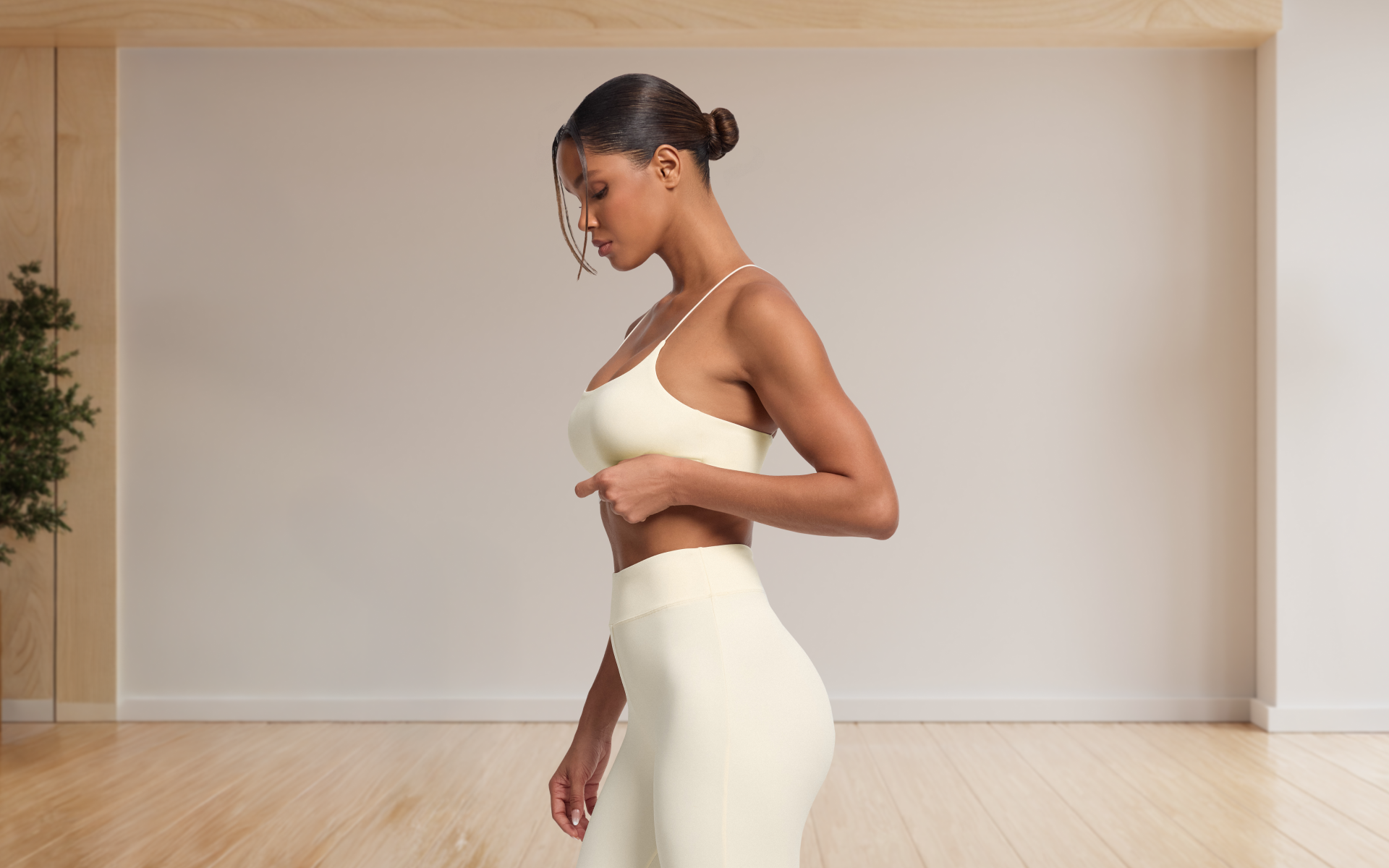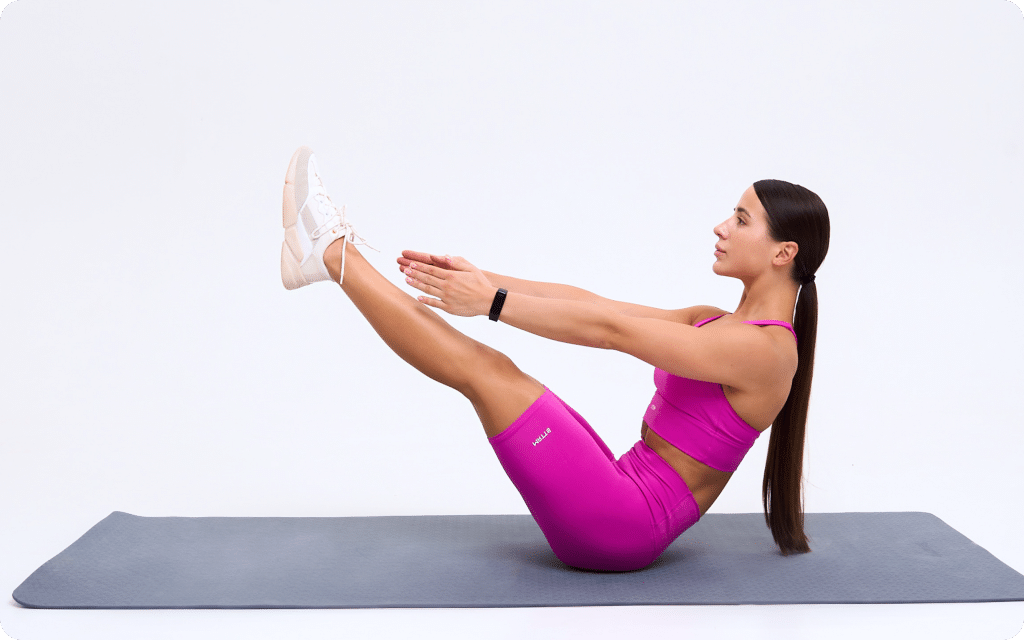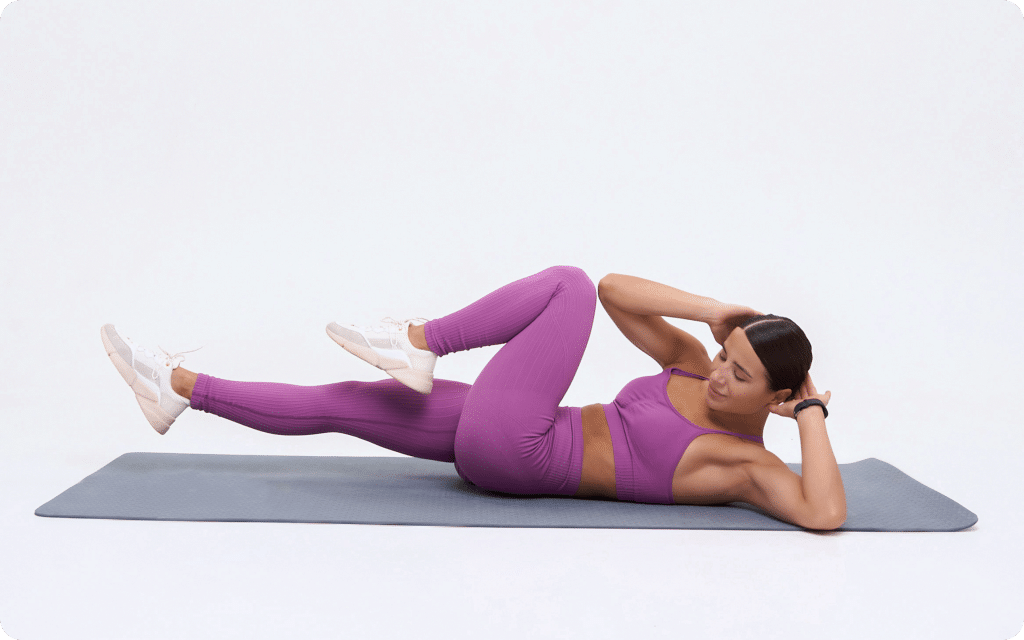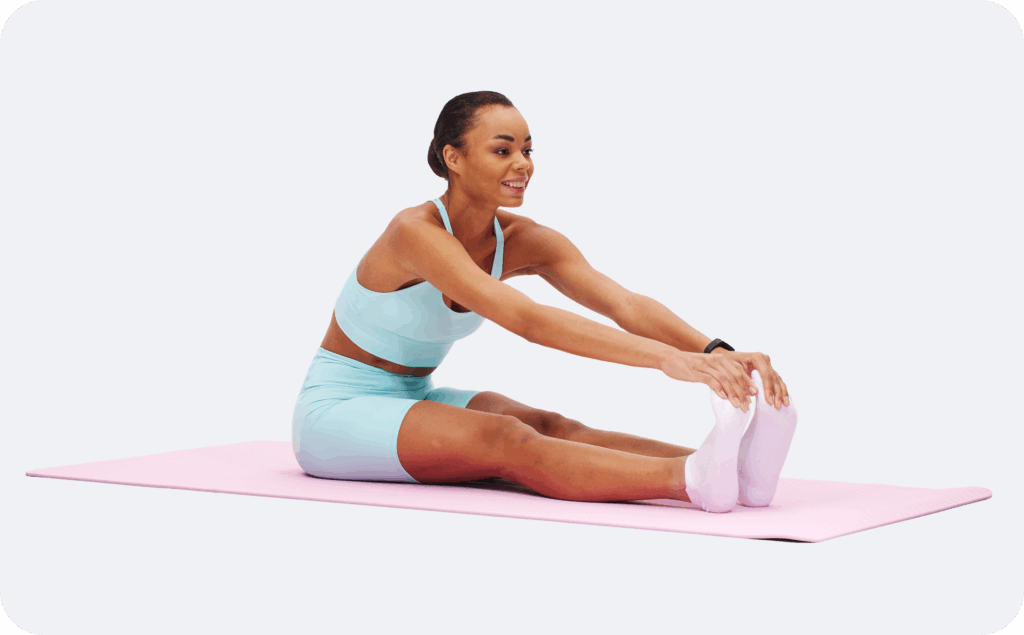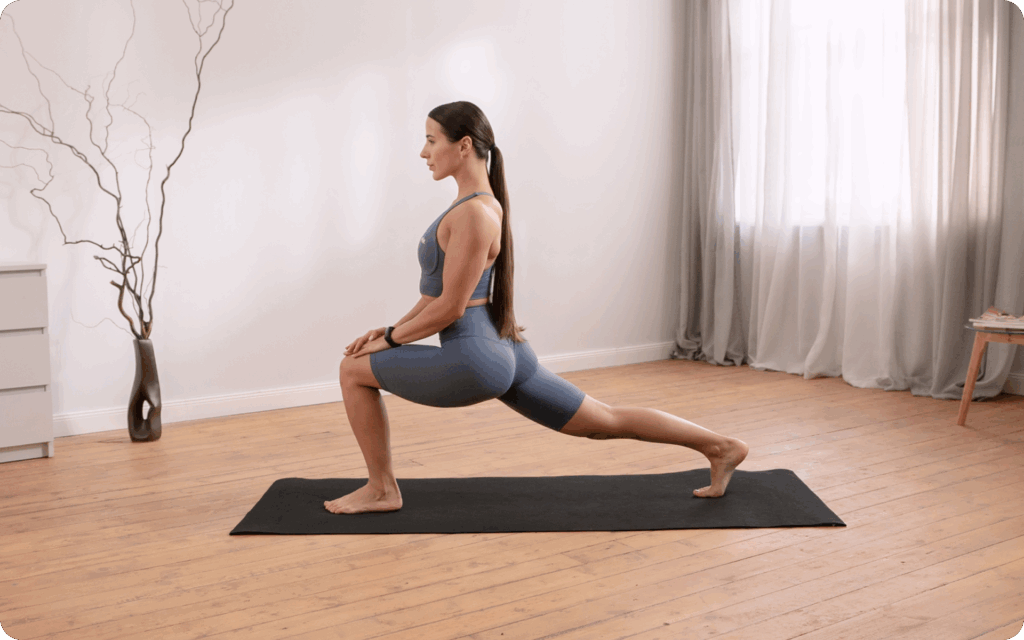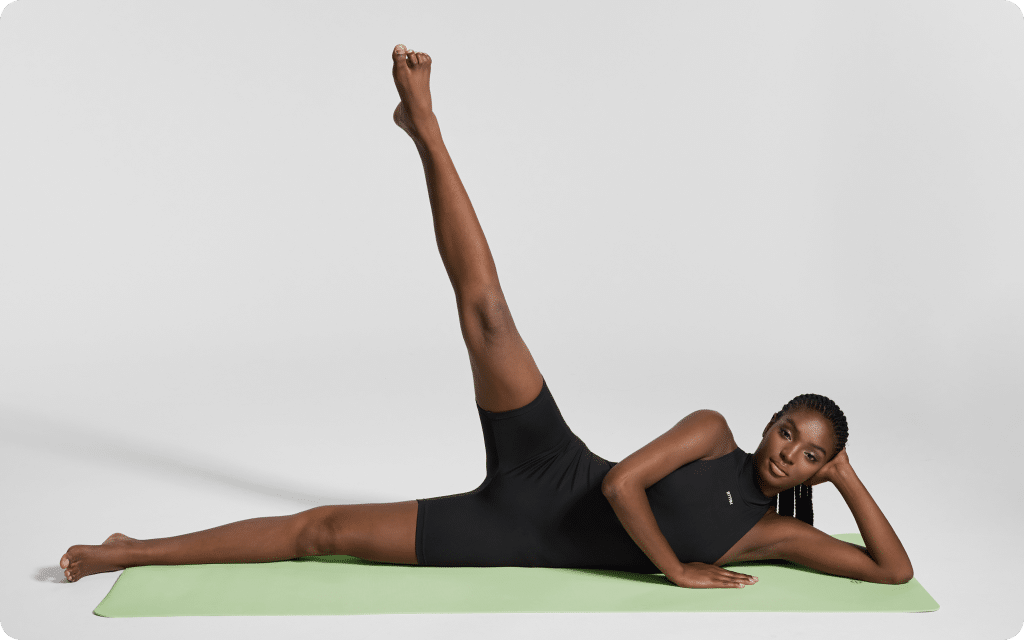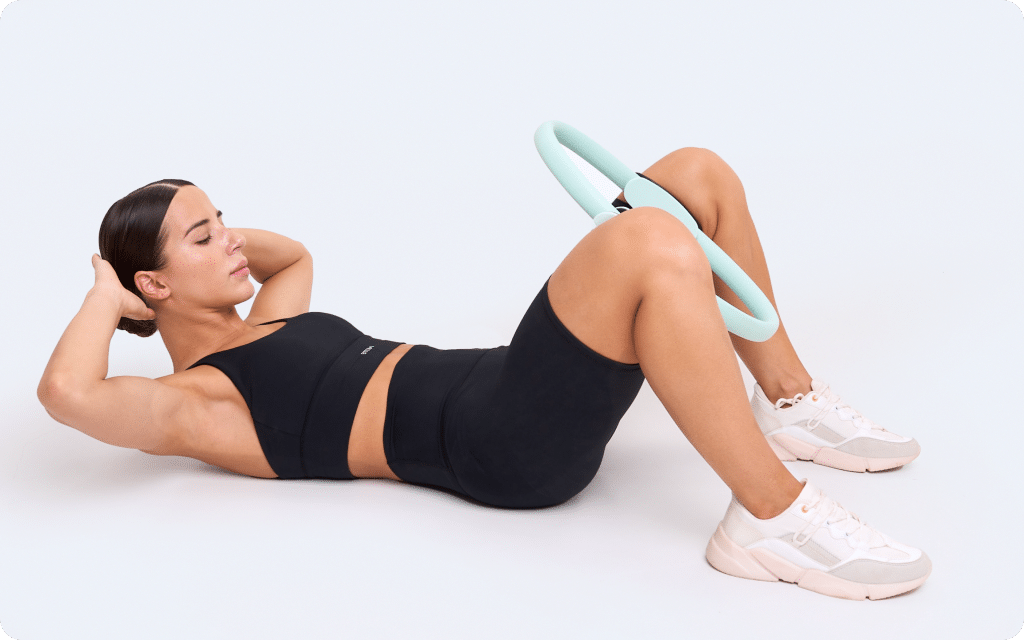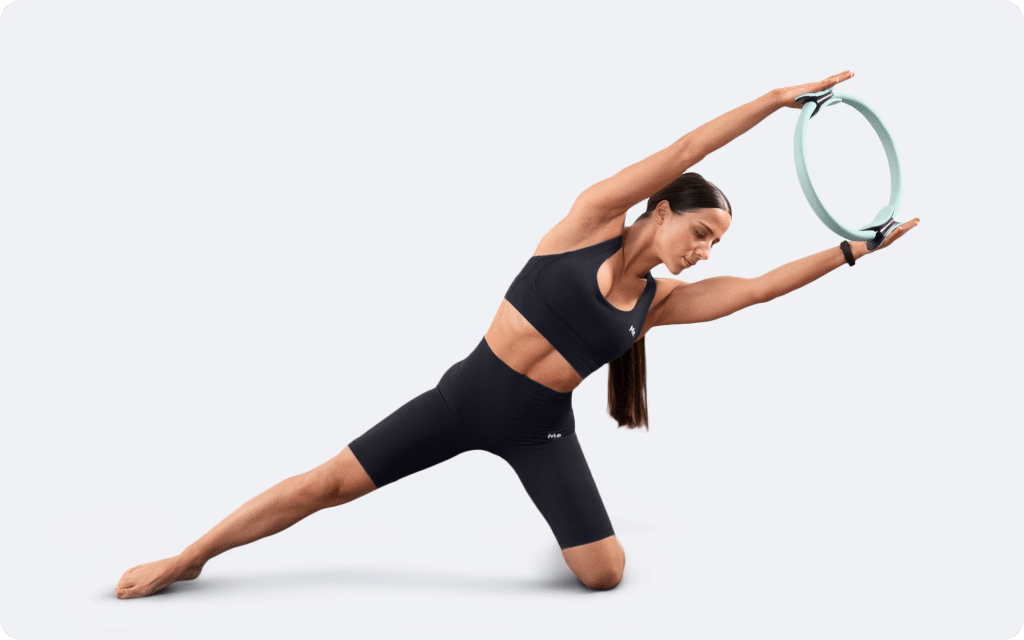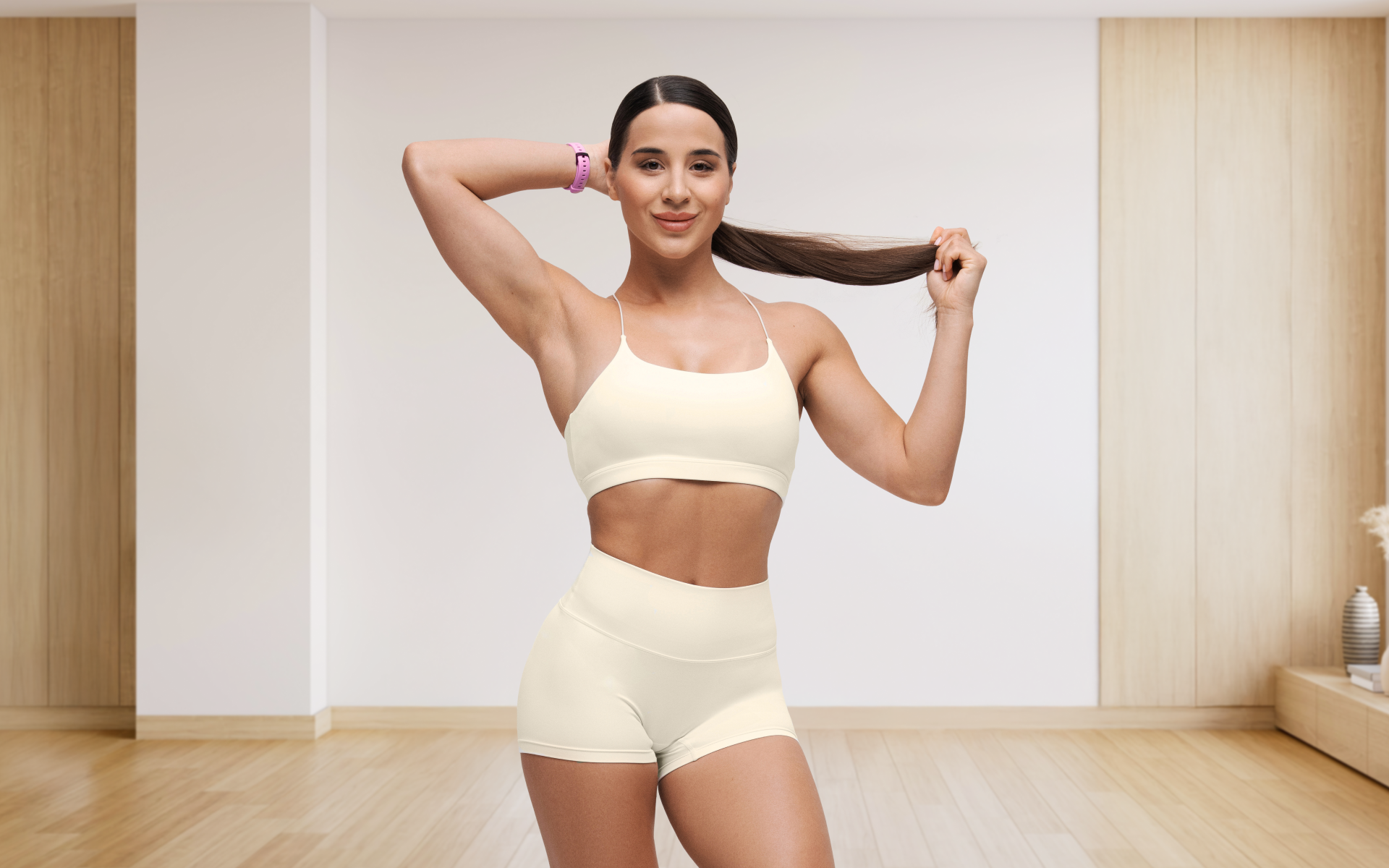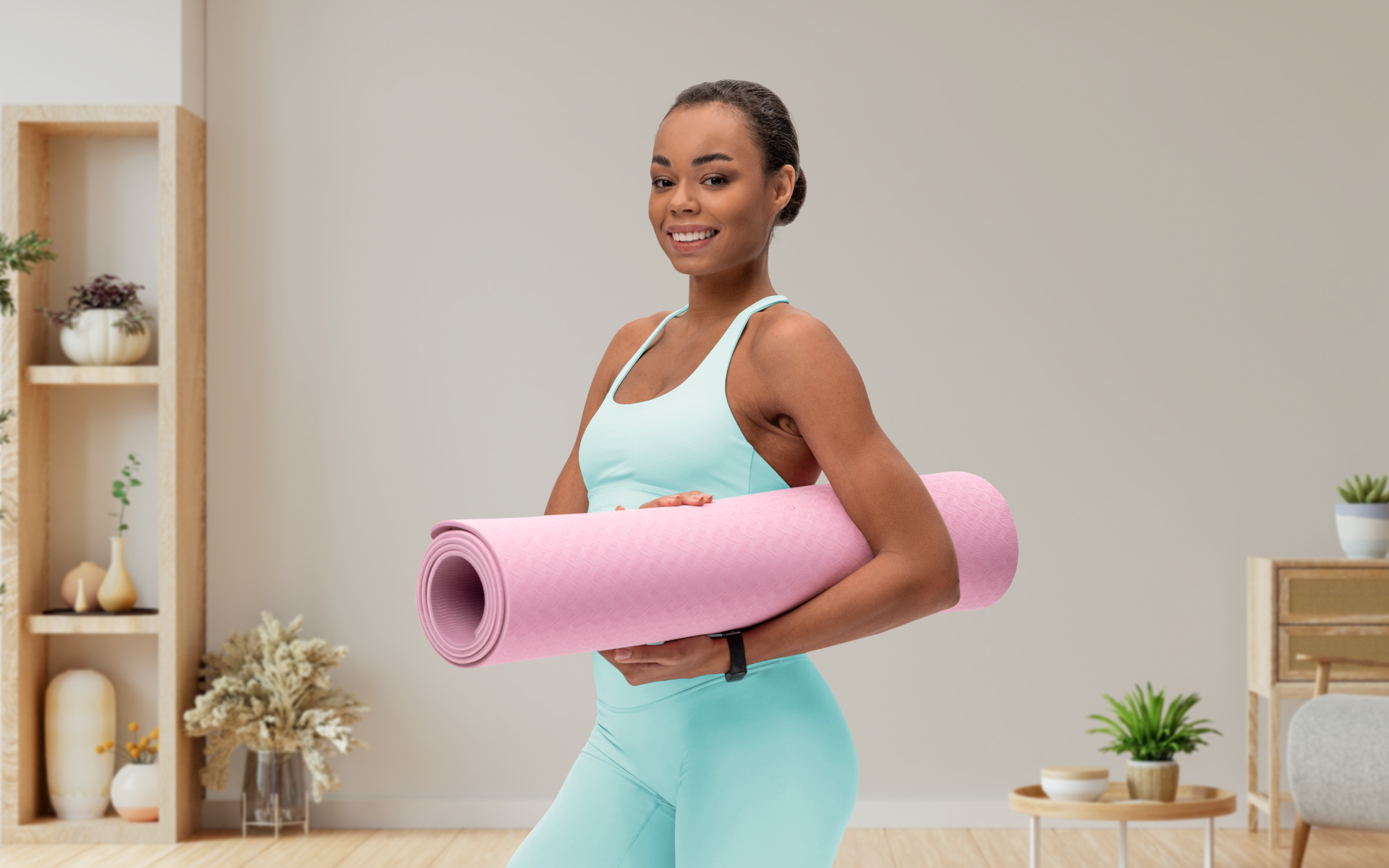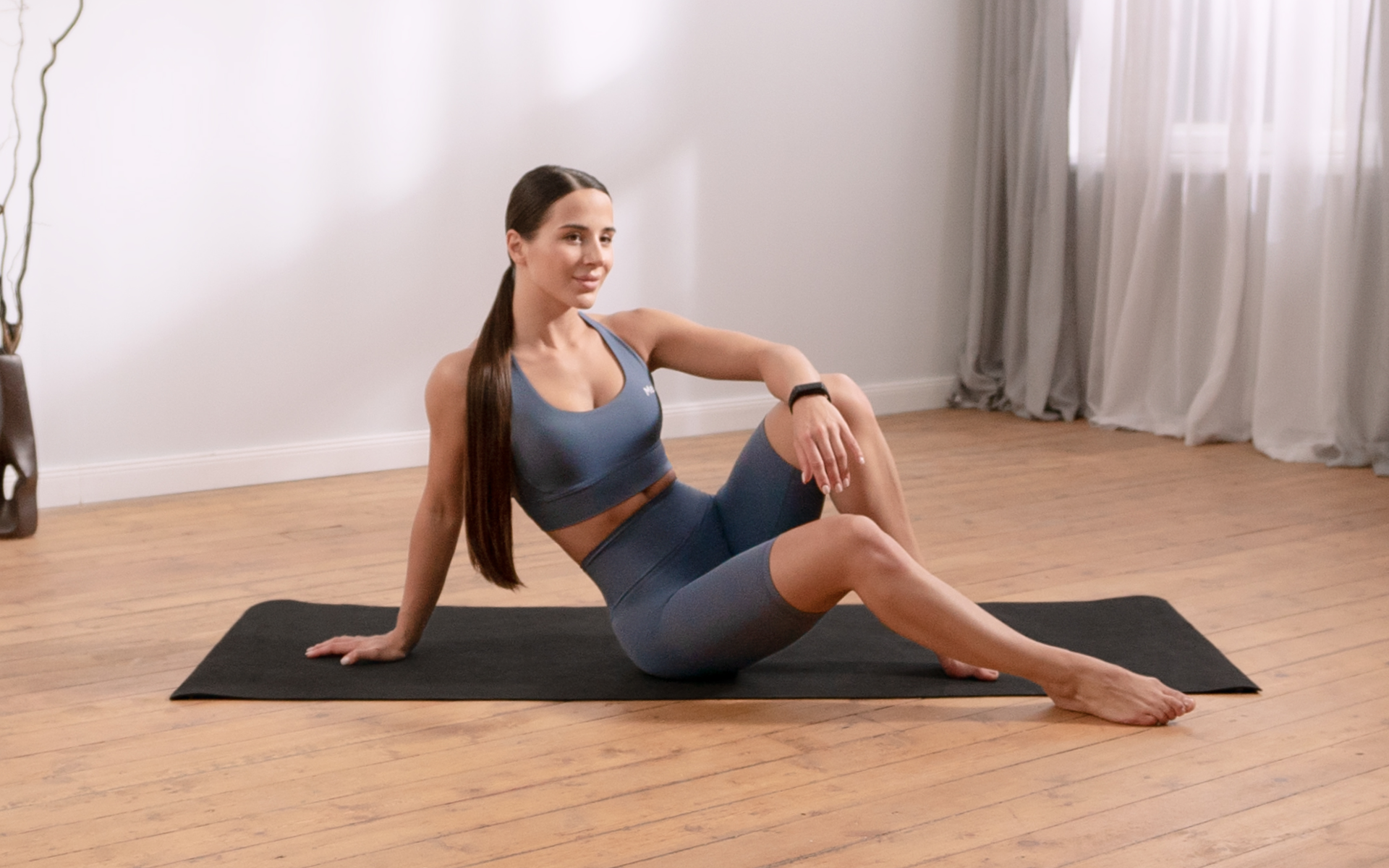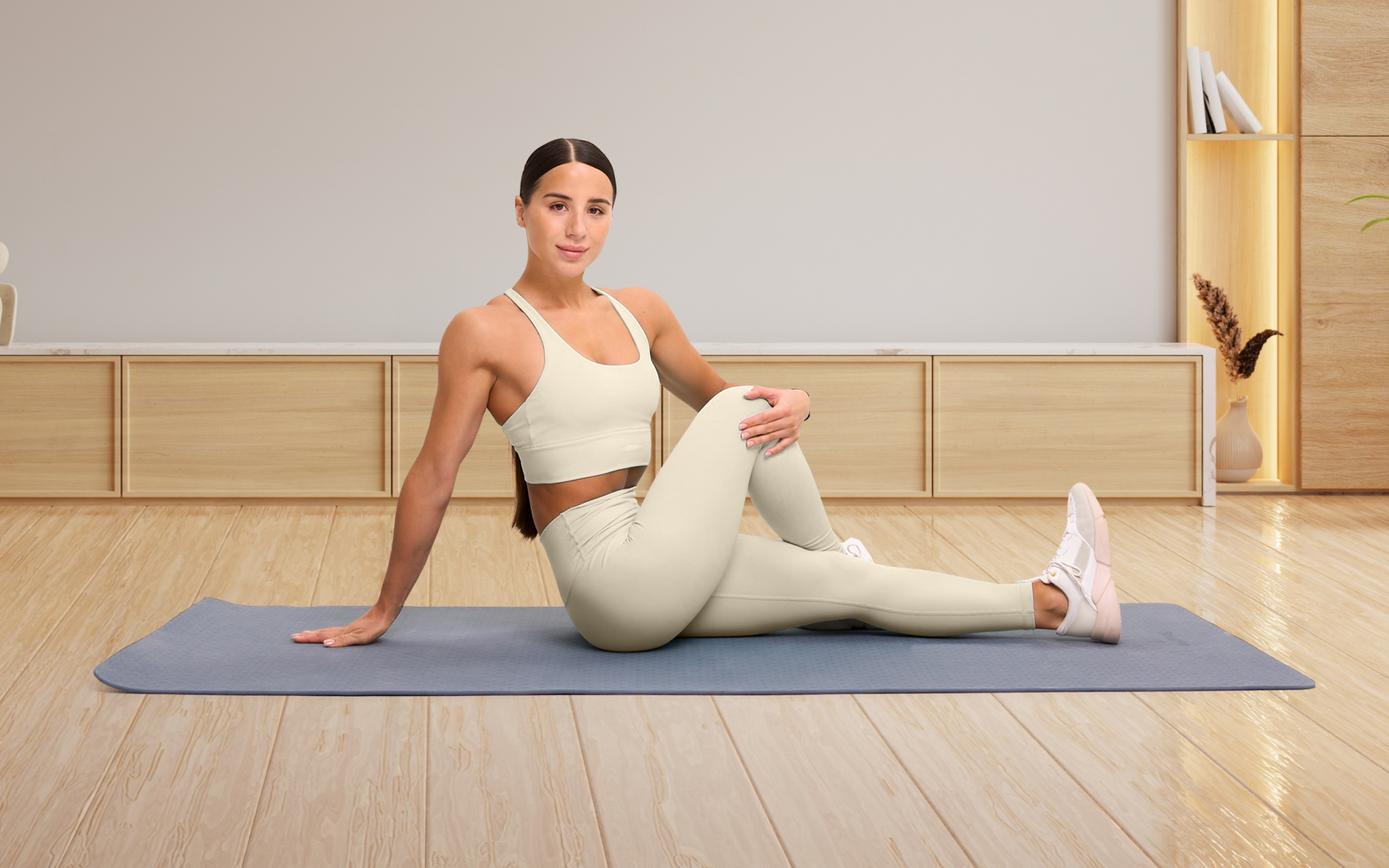Pilates is often associated with a strong, toned core and improved posture.
This connection naturally leads to a common question: can this popular mind-body exercise help you lose belly fat? The desire for a flatter midsection is a common fitness goal, but achieving it requires understanding how our bodies actually lose fat.
This guide provides a structured, evidence-based examination of the role Pilates can play in reducing abdominal fat. We will explore the science behind fat loss, what recent studies reveal about Pilates and body composition, and how you can program your training for the best possible results. You will learn not just if Pilates works, but how and why it can be a powerful tool in your fitness journey.
Does Pilates Help You Lose Belly Fat Safely?
The short answer is yes, Pilates can contribute to losing belly fat safely, but not in the way many people think.
The idea that you can “spot reduce” fat from a specific area of your body by exercising the muscles underneath is a persistent myth. Your body loses fat systemically, meaning it draws energy from fat stores throughout the body, not just from the targeted area (1). A consistent energy deficit makes fat loss possible, where you burn more calories than you consume (2).
So, where does Pilates fit into this equation? Its contribution to belly fat loss is indirect but significant, supported by a growing body of scientific research.
- Contribution to Caloric Deficit
Any physical activity burns calories (3), and Pilates is no exception. A consistent Pilates practice increases your total weekly energy expenditure, helping you create or maintain the caloric deficit needed for fat loss (4). While a single session may not burn as many calories as a high-intensity run, its effects accumulate over time.
- Improved Body Composition
Recent studies have highlighted the effectiveness of Pilates in altering body composition. A 2024 randomized controlled study published in the International Journal of Environmental Research and Public Health found that a 12-week Pilates program led to significant reductions in body mass index (BMI), fat percentage, and waist circumference in women with obesity (5). Pilates can be a valuable component of a fat loss program.
- Enhanced Muscle Tone and Posture
Pilates is exceptional at strengthening the deep core muscles, including the transversus abdominis, which acts like a natural corset for your midsection (6). As this muscle becomes firmer and tighter, it can pull your abdomen in, creating a flatter, more streamlined appearance. Improved posture also helps you stand taller, which can instantly make your stomach look less prominent.
Whether you’re a workout beast or just a beginner making your first foray into the world of fitness and dieting – BetterMe has a lot to offer to both newbies and experts! Install the app and experience the versatility first-hand!
- Increased Adherence and Psychosocial Benefits
One of the biggest hurdles in any fitness plan is consistency.
A 2025 randomized controlled trial reported in Scientific Reports noted that Pilates has positive effects on psychological factors and self-confidence (7). Because it is low-impact and adaptable, many people find it more enjoyable and sustainable than other forms of exercise. This increased adherence means you are more likely to stick with it long enough to see real results.
To put it another way, while you cannot directly burn fat from your belly through Pilates or any form of exercise, it is an effective tool that supports the overall process of fat loss by increasing calorie burn, improving muscle tone, and making it easier to stay consistent with your fitness routine.
Read more: Ultimate Pilates Mat Exercises List: Do Your Core A Real Favor
Can You Get A Flat Stomach With Pilates?
Achieving a “flat stomach” is a multi-faceted goal that involves both reducing body fat and strengthening the underlying abdominal muscles. Pilates excels at the second part of this equation and provides strong support for the first.
3 primary factors influence a flat stomach appearance:
- Subcutaneous Fat: The layer of fat just beneath the skin.
- Visceral Fat: The fat stored deeper in the abdominal cavity around your organs.
- Core Muscle Tone: The strength and tension of your abdominal muscles, particularly the transversus abdominis.
Pilates directly and powerfully addresses core muscle tone (8). Traditional abdominal exercises like crunches primarily target the rectus abdominis (the “six-pack” muscles) (9).
Pilates, however, focuses on the deep stabilizing muscles of the core (8).
By strengthening your transversus abdominis, you are essentially tightening your internal “girdle,” which provides better support for your organs and creates a visibly flatter and more toned midsection.
However, if you have a significant layer of abdominal fat covering these muscles, you will not be able to see their definition. This excess layer of belly fat is where overall fat loss becomes crucial.
As established, Pilates helps with fat loss by contributing to your total energy expenditure. For more significant changes, especially in visceral fat, combining Pilates with other activities is key.
A 2024 preliminary study, published in the journal Nutrients, investigated the effects of online home-based Pilates combined with a diet in women with obesity. The results showed that this combination led to improvements in body composition, underscoring the powerful combination of exercise and nutrition (10).
Therefore, you can achieve a flatter stomach with Pilates, but it is most effective when combined with a comprehensive strategy.
This belly fat loss strategy should include:
- A Consistent Pilates Practice: To build deep core strength and improve postural alignment.
- A Balanced Nutrition Plan: To create a slight, sustainable caloric deficit that promotes overall fat loss (2).
- Complementary Cardiovascular Exercise: To increase your total weekly calorie burn and improve cardiovascular health (11).
- Sufficient Hydration and sleep are both critical for hormone regulation, recovery, and metabolism (12, 13).
If you are looking for practical exercises you can do at home, this is helpful: home workouts to lose belly fat.
Which Pilates Exercise Is Best For A Flat Tummy?
While no single exercise will magically melt belly fat, some Pilates movements are exceptionally effective at activating and strengthening the deep core muscles responsible for creating a toned, flat stomach appearance. The goal is not just to work the superficial abs but to engage the entire core system.
The “best” exercise is one that teaches you to maintain a stable pelvis and a braced core while moving your limbs. Here are some of the most impactful Pilates exercises for this purpose, suitable for a range of levels from Pilates for belly fat beginners to advanced practitioners.
- The Hundred
The Hundred is a classic Pilates warm-up that is fantastic for building core endurance and coordinating breath with movement. It challenges you to maintain a C-curve position while pumping your arms, forcing your deep abdominal muscles to work continuously to stabilize your torso.
- Roll Up
The Roll Up is a powerful articulation exercise for the spine that heavily recruits the rectus abdominis and obliques. The slow, controlled nature of the movement (both on the way up and down) builds exceptional strength and control throughout the core.
- Leg Circles
This exercise teaches you to disassociate your leg movement from your pelvis.
By keeping your torso and pelvis perfectly still while circling one leg, you force your deep core stabilizers, including the transversus abdominis and obliques, to fire intensely to prevent any rocking or shifting.
- Plank Series (Front and Side)
Planks are a staple in many fitness modalities for a reason. In Pilates, the focus is on achieving perfect form: a long, straight line from head to heels, an engaged core pulling the navel toward the spine, and active shoulder stabilizers. Holding a front or side plank builds immense isometric strength in the entire core musculature.
- Criss-Cross
Part of the “series of five,” this movement is similar to a bicycle crunch but with a strong emphasis on torso rotation and pelvic stability. It targets the obliques while challenging you to keep your lower back in contact with the mat and your pelvis stable, making it one of the more advanced flat stomach workouts.
The key to making these exercises effective is not speed or quantity, but quality. Focus on precise movements, controlled breathing, and deep muscle engagement rather than just going through the motions.
How Long Does It Take To Lose Belly Fat By Pilates?
The timeline for seeing results from any fitness program, including Pilates, depends on several individual factors. There is no one-size-fits-all answer, but we can establish a realistic timeframe based on scientific principles and reported study outcomes.
Factors influencing your results include:
- Starting Point: Your initial body composition, fitness level, and amount of abdominal fat.
- Consistency: How frequently and regularly you practice Pilates and other forms of exercise.
- Intensity: The level of challenge in your Pilates sessions and complementary workouts.
- Nutrition: Whether you are supporting your training with a diet conducive to fat loss.
- Genetics and Hormones: These can influence where your body prefers to store and lose fat.
With these variables in mind, here is a general, evidence-based timeline of what you may expect:
2 to 4 Weeks
You will likely feel changes before you see them. The initial benefits are often neuromuscular. You may notice improved posture, a greater sense of core connection (“pulling your navel to your spine” will feel more natural), and reduced minor aches and pains, particularly in your lower back. This period is the foundation-building phase.
4 to 8 Weeks
Visual changes may become apparent. Your waistline might feel a bit trimmer in your clothes, not necessarily from fat loss alone, but from the “cinching” effect of a stronger transversus abdominis. Your posture will be visibly taller. If you have been consistent with a supportive diet and cardio, you may see a slight reduction in overall body fat.
8 to 12 Weeks and Beyond
This timeframe is where significant, measurable changes in body composition occur.
Randomized controlled trials on Pilates and fat loss often employ 8- or 12-week protocols (5, 14).
A 2024 study on middle-aged sedentary women showed that 8 weeks of Pilates was effective in reducing BMI and body fat (14). By this point, consistent practice combined with a healthy lifestyle can lead to noticeable reductions in waist circumference and visible changes in abdominal fat.
To track your progress effectively, go beyond the scale.
- Take progress photos from the front and side every 2-4 weeks.
- Measure your waist circumference at the navel.
- Note how your clothes fit.
- Track your performance in your workouts (can you hold a plank longer or perform a Roll Up with more control?)
Patience and consistency are your greatest assets. Focus on building sustainable habits, and the results will follow.
Read more: Pilates Body: Myth or Reality?
How Many Pilates Sessions Per Week For A Flat Stomach?
To achieve noticeable changes in core strength and contribute effectively to fat loss, the frequency of your Pilates practice matters. The goal is to stimulate your muscles often enough to adapt and grow stronger, while also allowing for adequate recovery.
Based on exercise science principles and the protocols used in successful research studies, here is a recommended frequency:
A target of 3 to 4 Pilates sessions per week is ideal for most people aiming to improve core strength and body composition.
Here is why a 3-4-day frequency works:
- Skill Acquisition: Pilates is a skill-based practice. Frequent sessions help your brain and body learn the movements and master the deep muscle engagement required for optimal results.
- Muscle Adaptation: To build strength and tone, your muscles need a consistent stimulus. 3-4 sessions per week provide enough frequency to promote adaptation without overtraining (15).
- Consistency: This schedule is often manageable for most lifestyles, which increases the likelihood of long-term adherence.
How should you structure this?
- Pilates Sessions: Aim for 45-60 minutes per session. This duration allows for a proper warm-up, a comprehensive workout covering all major muscle groups with a core focus, and a cool-down.
- Complementary Training: Remember, Pilates is one piece of the puzzle. For optimal belly fat loss, combine your Pilates workouts with:
- Cardiovascular Exercise: The Centers for Disease Control and Prevention (CDC) recommends 150-300 minutes of moderate-intensity cardio (like brisk walking or cycling) or 75-150 minutes of vigorous-intensity cardio (like running or HIIT) per week (16).
- Resistance Training: Engaging in 2-3 sessions per week of full-body strength training can help build and maintain metabolically active muscle mass (17), which in turn boosts your metabolism (18). This is a crucial consideration when determining what exercise burns the most belly fat for female clients, as lean mass is key.
A sample weekly schedule might look like this:
- Monday: Pilates (60 min)
- Tuesday: Resistance Training (45 min) + Brisk Walk (30 min)
- Wednesday: Pilates (60 min)
- Thursday: Brisk Walk or other Cardio (45-60 min)
- Friday: Pilates (60 min)
- Saturday: Resistance Training (45 min)
- Sunday: Active Recovery (e.g., stretching, gentle walk)
This balanced approach ensures you are building core strength, increasing your overall calorie burn, and building lean muscle; the trifecta for effective and sustainable fat loss.
For more ideas on how to structure workouts for this goal, explore information on the 3 best exercises to lose belly fat after 50 woman.
BetterMe: Health Coaching app helps you achieve your body goals with ease and efficiency by helping to choose proper meal plans and effective workouts. Start using our app and you will see good results in a short time.
Why Am I Not Seeing Results From Pilates?
It can be frustrating to put in the time and effort without seeing the changes you hoped for. If you have been practicing Pilates consistently but are not seeing a reduction in belly fat or an improvement in your midsection, there are several common culprits.
Let’s break the culprits down methodically.
Your Nutrition Is Not Aligned With Your Goals
This factor is the most common reason for a lack of fat loss.
Exercise alone is often not enough to create a significant caloric deficit. You cannot out-train a diet that is high in processed foods, sugar, and excess calories. If you are not losing belly fat, take an honest look at your eating habits. Are you consuming more calories than you are burning?
You Are Not Being Consistent Enough
Seeing results requires consistency over time. Attending one class a week is beneficial for maintaining mobility, but it is unlikely to lead to significant changes in body composition. As discussed, aiming for 3-4 sessions per week, combined with other forms of activity, is necessary for most people to see noticeable results.
Your Form And Engagement Are Lacking
Pilates is about quality, not quantity. If you are going through the motions without genuine deep core engagement, you are missing out on the primary benefit of the practice. You might be using your hip flexors or back muscles to do the work your abs should be doing. Consider a session with a qualified instructor to review your form, especially if you are practicing exercises to reduce belly fat at home using online videos.
The Intensity Is Too Low
Your body adapts to exercise. If you are still doing the same beginner routine you started with 6 months ago, your body is no longer being challenged. You must progressively overload your muscles.
Progressive overload can mean:
- Moving to more advanced exercises.
- Adding props like resistance bands, a Pilates ring, or weights.
- Trying a reformer class, which uses spring resistance to increase the challenge.
You Are Neglecting Other Types Of Exercise
Pilates is a fantastic tool, but it is not a complete solution for fat loss. To effectively reduce belly fat, you need a well-rounded routine that includes cardiovascular exercise to burn calories (11) and full-body resistance training to build muscle (19). Muscle is metabolically active and helps you burn more calories even at rest (20).
You Are Not Getting Enough Sleep or Managing Stress
Chronic stress and insufficient sleep can lead to elevated cortisol levels, a stress hormone strongly linked to the accumulation of visceral fat around the abdomen.
If you are constantly stressed and sleep-deprived, your body may become biochemically resistant to losing belly fat, regardless of how well you eat or exercise (21, 22).
To get back on track, start by evaluating each of these areas. Often, a slight adjustment in one or two of these domains can break through a plateau and start seeing the results you are working for.
If you are a Pilates enthusiast looking to deepen your practice for this specific goal, you can find more targeted routines here: Pilates for belly fat.
Pilates is not the fastest method for burning fat compared to high-intensity cardiovascular exercises, such as running or HIIT. Its primary benefits are building deep core strength, improving posture, and increasing lean muscle tone (8). However, it contributes to your overall weekly calorie expenditure and, when combined with a proper diet and other forms of exercise, can be a very effective part of a sustainable fat loss plan. Both yoga and Pilates can be beneficial for reducing belly fat, but they work in slightly different ways. Pilates places a powerful, systematic emphasis on core engagement and stabilization (8). Many forms of yoga, especially vinyasa or power yoga, can be more cardiovascular and more physically demanding (23), thus potentially burning more calories per session. The “better” option is the one you enjoy more and will practice consistently, as both support fat loss by building muscle, reducing stress, and burning calories. Practicing Pilates 3 times a week can be enough to contribute to weight loss, provided it is part of a larger strategy. If those 3 sessions are your only form of activity and your diet remains high in calories, you are unlikely to lose significant weight. However, when combined with 3weekly Pilates sessions, a nutritious, calorie-controlled diet, and additional activity (such as daily walks), it can be a highly effective component of a weight loss plan. Absolutely. Mixing Pilates and weight training is an excellent strategy for transforming your body composition. Weight training is superior for building overall muscle mass (hypertrophy), which boosts your metabolism (24). Frequently Asked Questions
Does Pilates burn fat fast?
Is Yoga or Pilates better for belly fat?
Is Pilates 3 times a week enough to lose weight?
Can you mix Pilates and weight training?
The Bottom Line
Pilates can be a powerful ally in your quest to lose belly fat and achieve a flatter stomach, but it is not a magic bullet. Its real strength lies in its ability to build a strong, functional core from the inside out, improve posture, and create a sustainable form of movement that you can stick with for the long haul.
The visible reduction of belly fat is ultimately a result of systemic fat loss, driven by a consistent caloric deficit achieved through a combination of smart nutrition, cardiovascular exercise, and strength work.
By integrating a consistent Pilates practice into a well-rounded health and fitness strategy, you are not just chasing a flatter stomach; you are building a stronger, more resilient, and better-aligned body. This holistic approach empowers you to achieve lasting results that you can both see and feel.
DISCLAIMER:
This article is intended for general informational purposes only and does not serve to address individual circumstances. It is not a substitute for professional advice or help and should not be relied on for making any kind of decision-making. Any action taken as a direct or indirect result of the information in this article is entirely at your own risk and is your sole responsibility.
BetterMe, its content staff, and its medical advisors accept no responsibility for inaccuracies, errors, misstatements, inconsistencies, or omissions and specifically disclaim any liability, loss or risk, personal, professional or otherwise, which may be incurred as a consequence, directly or indirectly, of the use and/or application of any content.
You should always seek the advice of your physician or other qualified health provider with any questions you may have regarding a medical condition or your specific situation. Never disregard professional medical advice or delay seeking it because of BetterMe content. If you suspect or think you may have a medical emergency, call your doctor.
SOURCES:
- A proposed model to test the hypothesis of exercise-induced localized fat reduction (spot reduction), including a systematic review with meta-analysis (2022, hummov.awf.wroc.pl)
- Optimal Diet Strategies for Weight Loss and Weight Loss Maintenance (2020, pmc.ncbi.nlm.nih.gov)
- American Heart Association Recommendations for Physical Activity in Adults and Kids (2024, heart.org)
- “Calories in, calories out” and macronutrient intake: the hope, hype, and science of calories (2017, journals.physiology.org)
- Effects of a 12-Week Pilates Program on Functional Physical Fitness and Basal Metabolic Rate in Community-Dwelling Middle-Aged Women: A Quasi-Experimental Study (2022, mdpi.com)
- Pilates and the “powerhouse”—I (2004, sciencedirect.com)
- Effects of reformer pilates on body composition, strength, and psychosomatic factors in overweight and obese women: A randomized controlled trial (2025, nature.com)
- Pilates: how does it work and who needs it? (2011, pmc.ncbi.nlm.nih.gov)
- Core Training (2017, journals.lww.com)
- The Effects of Online Home-Based Pilates Combined with Diet on Body Composition in Women Affected by Obesity: A Preliminary Study (2024, pmc.ncbi.nlm.nih.gov)
- The (Many) Benefits of a Cardio Workout (2023, health.clevelandclinic.org)
- Narrative Review of Hydration and Selected Health Outcomes in the General Population (2019, pmc.ncbi.nlm.nih.gov)
- Sleep and Metabolism: An Overview (2010, onlinelibrary.wiley.com)
- The Effect of Eight Weeks of Pilates Exercises on Anthropometric Indices and Subjective Well-being in Obese Middle-aged Women (2023, openpublichealthjournal.com)
- Progression Models in Resistance Training for Healthy Adults (2019, journals.lww.com)
- Adult Activity: An Overview | Physical Activity Basics (2023, cdc.gov)
- Resistance training – health benefits (2022, betterhealth.vic.gov.au)
- Increasing muscle mass to improve metabolism (2013, pmc.ncbi.nlm.nih.gov)
- Adaptations to Endurance and Strength Training (2018, pmc.ncbi.nlm.nih.gov)
- Muscle cells vs. fat cells (2022, medlineplus.gov)
- Stress and Obesity (2019, annualreviews.org)
- Sleep Deprivation: Effects on Weight Loss and Weight Loss Maintenance (2022, pmc.ncbi.nlm.nih.gov)
- Different Types of Yoga as a Sport (2022, researchgate.net)
- Strength training: Get stronger, leaner, healthier (2023, mayoclinic.org)
